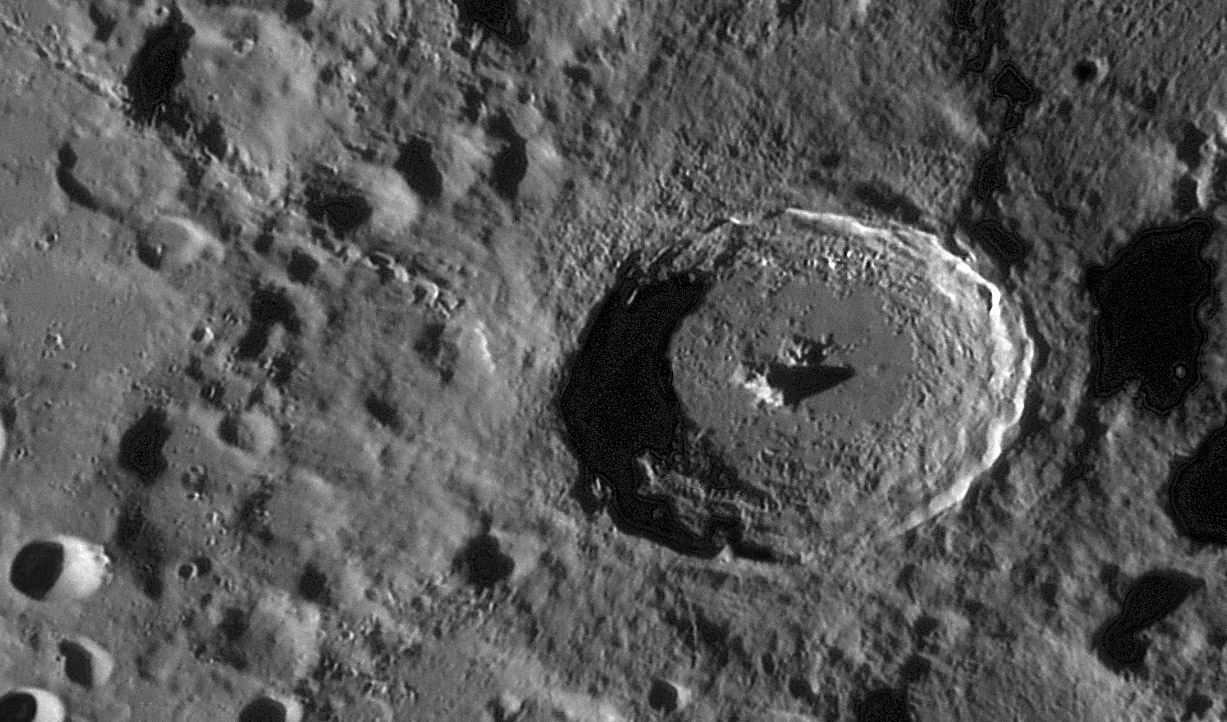Difference between revisions of "October 6, 2010"
| Line 1: | Line 1: | ||
__NOTOC__ | __NOTOC__ | ||
=Somewhere in Orbit= | =Somewhere in Orbit= | ||
| − | |||
<!-- ws:start:WikiTextHeadingRule:1:<h1> --> | <!-- ws:start:WikiTextHeadingRule:1:<h1> --> | ||
<!-- ws:start:WikiTextLocalImageRule:16:<img src="/file/view/LPOD-Oct6-10.jpg/168149385/LPOD-Oct6-10.jpg" alt="" title="" /> -->[[File:LPOD-Oct6-10.jpg|LPOD-Oct6-10.jpg]]<!-- ws:end:WikiTextLocalImageRule:16 --><br /> | <!-- ws:start:WikiTextLocalImageRule:16:<img src="/file/view/LPOD-Oct6-10.jpg/168149385/LPOD-Oct6-10.jpg" alt="" title="" /> -->[[File:LPOD-Oct6-10.jpg|LPOD-Oct6-10.jpg]]<!-- ws:end:WikiTextLocalImageRule:16 --><br /> | ||
| − | <em>image by [mailto:starman2@allegiance.tv Wes Higgins]</em><br /> | + | <em>image by [mailto:starman2@allegiance.tv" rel="nofollow Wes Higgins]</em><br /> |
<br /> | <br /> | ||
With all the recent images from LRO and Kaguya it is nice to see that Spacecraft Wes is back in orbit too. This stunning image beautifully depicts the different components of Tycho's floor, rim and exterior deposits. The smooth material coating the north and east sides of the floor are broad extents of impact melt, and rubble from fallback and downslope movement of wall rocks litter the rest of the floor. Striated ejecta is most apparent on the right side of the image, consistent with Tycho having resulted from an oblique impact with the projectile coming from the west/left. The largest secondary crater chain extends to the northwest, seeming to mark the edge of the uprange ejecta deposits. Another much smaller crater chain is just south of Tycho's rim and not at all radial to the crater center. The details of impact crater formation are still incompletely understood, and remind me of the comment of a volcanologist at the Hawaii Volcano Observatory. He said that having watched the buildup of a volcanic cone during its formation he could understand the process of its formation, but he doubted if any one would be able to correctly deduce the complex details of its formation if they only had the deposits themselves to look at.<br /> | With all the recent images from LRO and Kaguya it is nice to see that Spacecraft Wes is back in orbit too. This stunning image beautifully depicts the different components of Tycho's floor, rim and exterior deposits. The smooth material coating the north and east sides of the floor are broad extents of impact melt, and rubble from fallback and downslope movement of wall rocks litter the rest of the floor. Striated ejecta is most apparent on the right side of the image, consistent with Tycho having resulted from an oblique impact with the projectile coming from the west/left. The largest secondary crater chain extends to the northwest, seeming to mark the edge of the uprange ejecta deposits. Another much smaller crater chain is just south of Tycho's rim and not at all radial to the crater center. The details of impact crater formation are still incompletely understood, and remind me of the comment of a volcanologist at the Hawaii Volcano Observatory. He said that having watched the buildup of a volcanic cone during its formation he could understand the process of its formation, but he doubted if any one would be able to correctly deduce the complex details of its formation if they only had the deposits themselves to look at.<br /> | ||
<br /> | <br /> | ||
| − | <em>[mailto:tychocrater@yahoo.com Chuck Wood]</em><br /> | + | <em>[mailto:tychocrater@yahoo.com" rel="nofollow Chuck Wood]</em><br /> |
<br /> | <br /> | ||
<strong>Technical Details</strong><br /> | <strong>Technical Details</strong><br /> | ||
| Line 17: | Line 16: | ||
<br /> | <br /> | ||
<hr /> | <hr /> | ||
| − | <div>You can support LPOD when you buy any book from Amazon thru [http://www.lpod.org/?page_id=591 LPOD!]<br /> | + | <div>You can support LPOD when you buy any book from Amazon thru [http://www.lpod.org/?page_id=591" rel="nofollow LPOD!]<br /> |
</div> | </div> | ||
| − | |||
---- | ---- | ||
===COMMENTS?=== | ===COMMENTS?=== | ||
Click on this icon [[image:PostIcon.jpg]] at the upper right to post a comment. | Click on this icon [[image:PostIcon.jpg]] at the upper right to post a comment. | ||
Revision as of 22:07, 4 January 2015
Somewhere in Orbit

image by " rel="nofollow Wes Higgins
With all the recent images from LRO and Kaguya it is nice to see that Spacecraft Wes is back in orbit too. This stunning image beautifully depicts the different components of Tycho's floor, rim and exterior deposits. The smooth material coating the north and east sides of the floor are broad extents of impact melt, and rubble from fallback and downslope movement of wall rocks litter the rest of the floor. Striated ejecta is most apparent on the right side of the image, consistent with Tycho having resulted from an oblique impact with the projectile coming from the west/left. The largest secondary crater chain extends to the northwest, seeming to mark the edge of the uprange ejecta deposits. Another much smaller crater chain is just south of Tycho's rim and not at all radial to the crater center. The details of impact crater formation are still incompletely understood, and remind me of the comment of a volcanologist at the Hawaii Volcano Observatory. He said that having watched the buildup of a volcanic cone during its formation he could understand the process of its formation, but he doubted if any one would be able to correctly deduce the complex details of its formation if they only had the deposits themselves to look at.
" rel="nofollow Chuck Wood
Technical Details
09-30-10 , 18" Reflector, Infinity 2-1M Camera, stack of 232 frames, MAP =3250
Related Links
Rükl plate 64
COMMENTS?
Click on this icon File:PostIcon.jpg at the upper right to post a comment.



